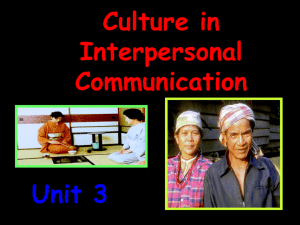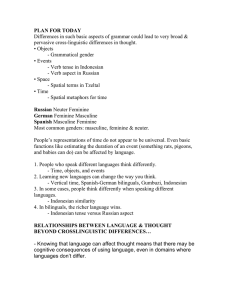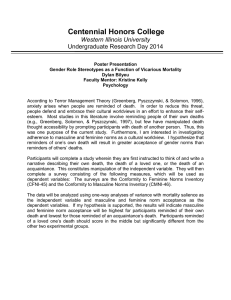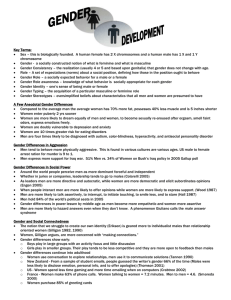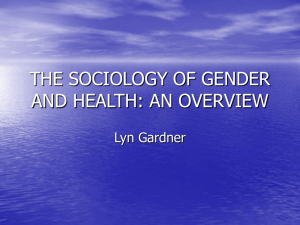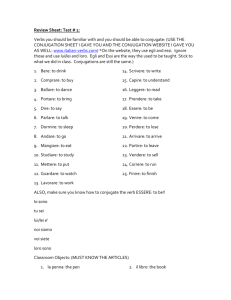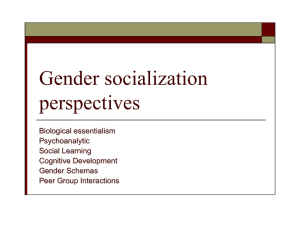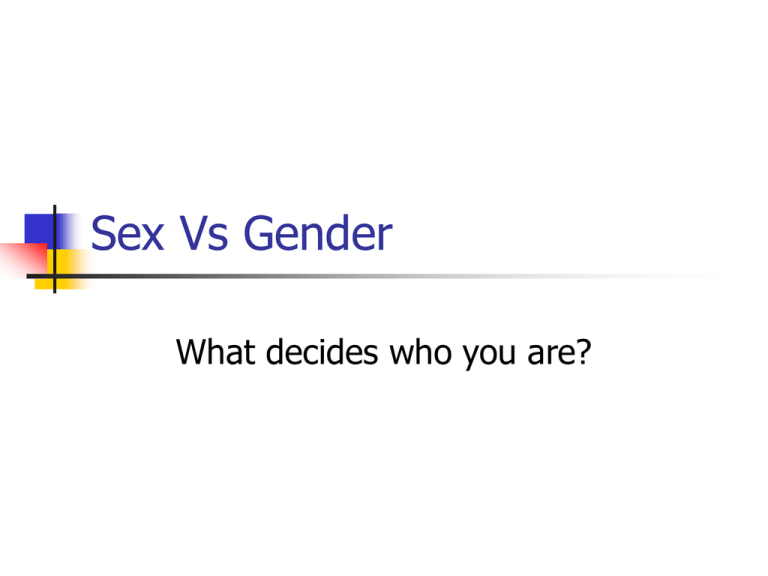
Sex Vs Gender
What decides who you are?
Conception
If sex is whether an
individual is male or
female, then this is
decided at conception
when a sperm fertilises
an egg. A newly formed
foetus has the
chromosomes that
determine whether it
will be born a girl or a
boy. Is gender the
same?
Is sex change final?
If sex is genetic,
then it follows that
an individual’s sex is
fixed. Genes cannot
be changed. Socalled ‘sex change’
operations therefore
do not really change
a person’s sex.
However, an individual’s sex is partly
determined by their anatomy (for example,
genitals) and this can be changed in genderreassignment surgery.
A transsexual woman may have a penis
constructed and her breasts removed so she
appears as a man. She may also be given
hormones to promote facial hair and inhibit
menstruation, yet internally, both in terms of
genetics and sexual organs she will always be
female.
Gender Identity
As long as the
transsexual looks and
feels like their chosen
gender then they don’t
care about the
biological definitions.
This is the reason they
would have the surgery
in the first place. ANTM
contestant Isis’s sex
was male but her
gender identity was
feminine.
This suggests that gender is fixed like sex, since people
who undergo gender re-assignment have not been able
to simply adopt the gender role of the sex that they
were born.
There is evidence that suggests a
person’s gender can change.
Imperato-McGinley (1979)
The Batista Boys
Aim
To demonstrate that individuals can
change their gender role and identity.
Method
A case study was carried out on 18 males
who were part of the same extended family
living in rural communities in the Dominican
Republic. They had been born with a
hormone deficiency which meant their
genitals appeared to be female and so they
were raised as girls. The evidence suggested
they had no problem with adopting a
feminine identity and role until puberty. At
puberty, the increased production of male
hormones caused their testicles to descend
and their clitoris-like organs to grow into
penises.
Results
Following their biological transformation
at puberty, nearly all of the boys easily
adapted to their true sex. They adopted
masculine identities and began to
‘behave like men.’
Conclusion
This shows that sex and gender are
distinct concepts. The individual’s sex
had clearly not changed over time, but
their gender had. When investigated
they had fully embraced the gender
role, showing gender is flexible.
Evaluation
The problem with any case study is that samples are
small – in this case, one small community. It might
be that other cultures would respond differently to
the disorder and we cannot assume that all people
would adapt so easily to their new gender role. For
example, in the case of this community, roles were
seen as God-given and part of one’s destiny. In
addition, the Dominican Republic was a very
patriarchal society so the boys in this study may have
been pleased to discover they were actually male.
However, the researchers did not meet the
participants until they were adults so had to rely on
retrospective accounts of their childhoods. Therefore,
they could not reliably say that the boys had fully
adopted the feminine gender role before puberty.
Further Evidence
Flexibility of gender comes from Rekers et al
(1974). They described how they used a
three-year programme of treatment to
extinguish the highly feminine behaviour of
an 8 year old boy and replace it with
masculine behaviour. When the boy was
assessed at the age of 16 he was described
as a normal gender-appropriate adolescent.
This had been achieved by reinforcing
masculine traits in the boy, again showing
that a person’s gender can be changed.
To conclude, psychologists are more
interested in the concept of gender because it
relates to people’s perception of themselves
and to their behaviour. Essentially, gender is a
psychologist concept, whereas sex is a
biological concept. There is little dispute
about the origins of an individual’s sex, but
what makes a person masculine, feminine or
androgynous is much more debateable.
Plenary
1.
2.
3.
4.
Give an example of a feminine
behaviour.
Give an example of a masculine
behaviour.
Outline what is meant by androgyny.
Explain the differences between sex
and gender.


